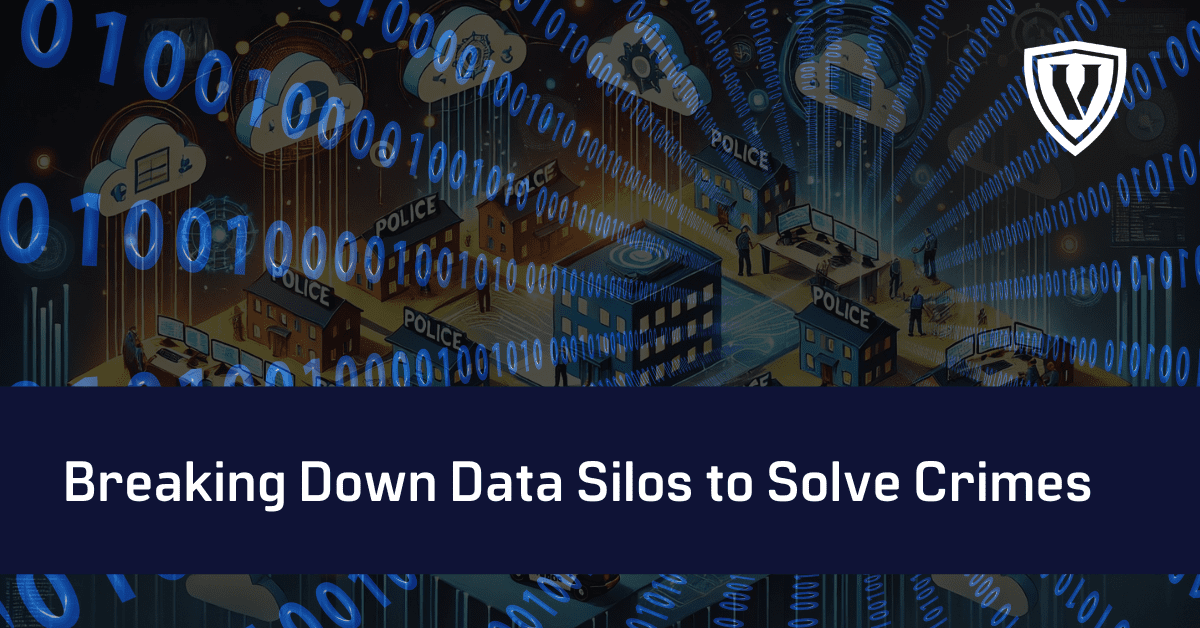One of the biggest roadblocks in law enforcement today? Data silos.
Too many agencies operate with outdated systems that don’t talk to each other. This slows down investigations, prevents real-time crime analysis, and creates blind spots in public safety. Criminals don’t respect jurisdictional boundaries—so why should our data?
The Impact of Data Silos on Law Enforcement
Law enforcement agencies are collecting more data than ever before, from records management systems (RMS) to surveillance footage, open-source intelligence (OSINT), and license plate recognition (LPR) databases. However, when these systems operate in isolation, it creates inefficiencies that directly impact public safety outcomes. Without seamless data sharing, officers may miss critical connections between cases, causing delays in investigations and allowing criminals to evade justice.
The Power of Modern Data-Sharing Platforms
Breaking down data silos is not just a convenience—it’s a necessity for modern policing. Technology has evolved to provide agencies with secure, real-time access to case data, enabling law enforcement to work smarter, not harder. Agencies that embrace data-sharing platforms can:
1. Access Critical Case Information Across Jurisdictions
Crime does not recognize city, county, or state boundaries. When agencies share data in real time, they can identify suspects faster, track criminal movements, and close cases more efficiently. Platforms like FINDER Investigate enable agencies to securely share and analyze investigative data, ensuring that no crucial information is lost due to jurisdictional barriers.
2. Identify Connections Between Crimes Faster
Fragmented data forces investigators to manually search for links between cases, which wastes valuable time and resources. With integrated data-sharing solutions, officers can:
- Instantly cross-reference reports from different agencies.
- Identify patterns and trends that might otherwise go unnoticed.
- Use advanced analytics to connect seemingly unrelated cases.
This capability accelerates investigations and allows law enforcement to take proactive measures to prevent further criminal activity.
3. Enhance Intelligence Sharing for More Informed Decision-Making
Intelligence-led policing relies on timely and accurate information. By integrating data from SIGINT (Signals Intelligence), OSINT, and other investigative sources, agencies gain a comprehensive view of potential threats. Secure data-sharing networks facilitate:
- Faster information exchange between local, state, and federal law enforcement agencies.
- Improved collaboration on high-priority cases.
- More effective allocation of resources based on crime trends and emerging threats.
When law enforcement has access to the right information at the right time, they can respond with greater precision and effectiveness.
Real-World Applications: How Agencies Are Using Data Sharing to Solve Crimes
Several forward-thinking agencies have already embraced data-sharing technology, yielding significant results:
- Stolen Vehicle Recovery: Departments using LPR systems integrated with regional and national databases can recover stolen vehicles more quickly by identifying and tracking suspect movements across jurisdictions.
- Human Trafficking Investigations: Data-sharing platforms allow agencies to connect missing persons reports, financial transactions, and OSINT intelligence to dismantle trafficking networks more effectively.
- Organized Retail Crime: Retailers and law enforcement agencies sharing data on repeat offenders have been able to track and apprehend organized crime groups responsible for large-scale theft operations.
These examples illustrate the power of data-sharing technology in improving case resolution times and enhancing public safety.
Addressing Privacy and Security Concerns
While data sharing is crucial for effective law enforcement, agencies must also prioritize security and compliance. CJIS-compliant platforms ensure that sensitive information is protected while allowing authorized personnel to access necessary data. Secure cloud-based storage, end-to-end encryption, and role-based access controls are essential components of any modern data-sharing system.
Transparency and accountability also play a critical role in maintaining public trust. Agencies should implement clear policies on data access, usage, and retention to ensure ethical and responsible information sharing.
The Future of Law Enforcement: A Unified Approach to Data Sharing
As crime continues to evolve, law enforcement must adapt by leveraging technology that fosters collaboration. The future of policing depends on:
- Interoperable systems that connect departments and provide real-time insights.
- Advanced analytics to detect crime patterns and enhance investigative strategies.
- Secure, cloud-based platforms that facilitate multi-agency collaboration.
Departments that fail to embrace digital transformation risk falling behind, allowing criminals to exploit inefficiencies in the system. By investing in cutting-edge technology and fostering a culture of collaboration, agencies can strengthen their crime-fighting efforts and keep communities safer.
What’s Next?
If your agency isn’t embracing secure, real-time data sharing, you’re missing a game-changing opportunity. The technology exists, and the need has never been greater. It’s time to work smarter, not harder, by breaking down data silos and leveraging the full potential of modern policing tools.

